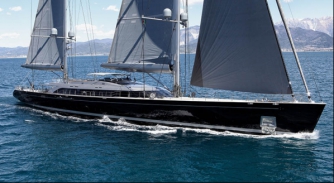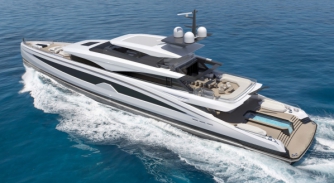How long is a piece of string?
Are LOI periods for large custom projects sufficient? Could innovation budgets be a potential solution? …
For large custom new build projects, it is always going to be difficult to price exactly from the onset of a project. Asking how much a large custom project is going to cost before fully understanding all the variables is like asking how long a piece of string is. It is perhaps for this reason that some large custom builders have struggled to find margin on particular projects in recent years. It can also be a reason why owners become frustrated with build projects. As change orders mount up and costs increase, buyers, especially those who are new to the superyacht market, can become disenfranchised with a build. By increasing the LOI period or budgeting for innovation and change, might yards be able to price more accurately and negate changes throughout a project?
“Until the point in the project where owners have determined exactly what they want, it is near impossible to give them an accurate price for a build,” starts Derek Munro, owner’s representative and director of Divergent Yachting. “The longer the letter of intent (LOI) period, the more time you can plan upfront and sit with the client to determine exactly what they want. After which, on the day of actually signing the contract, hopefully, you will already know what tenders the client wants, what navigation package they have decided and so on. It is important to determine the cost for all the elements that will come under owner’s supply, whether that be AV/IT or the interiors.”
According to Munro, typical LOI periods can be anywhere between a couple of weeks to a couple of months (if the client is lucky). Naturally, LOI periods will vary depending on the complexity of a particular project. For production and semi-custom builds, the LOI period will be shorter given that there are significantly fewer decisions to be made. However, especially in light of the growing size and complexity of the world’s largest projects, a couple of months doesn’t seem anywhere near sufficient for a thorough review of the spec to take place.
“The LOI periods are far too quick,” continues Munro. “Quite often the broker and the shipyard will be pushing for it before the owner’s team has even been decided and then they might give you two or three weeks to do a full spec review. How are you supposed to do that for a 100m-plus project? You can’t, it’s impossible. So in the end the client ends up paying for it through change orders and that is probably one of the most frustrating elements of any build from the owner’s team’s perspective. Yards and brokers want to fill slots and take the fee for the LOI and they want their first deposit and the money coming in to secure their cash flow.”
Munro estimates that for a 70-90m project the LOI period should realistically be anywhere from four to five months, whereas for a 100m-plus project he suggests that six to nine months is probably required depending on the complexity of the project and the number of advanced technologies required. For the world’s largest and most complex technologies, the skills and technology required are not found solely within the shipyards and, therefore, to price accurately and avoid conflicts and change orders down the line a consultation period with third parties and experts is likely to be required, which will further have an impact on the acceptable LOI period.
Munro does, however, suggest an alternative solution, which requires a certain amount of transparency from brokers and shipyards from the conception of a project.
“You need time before a build begins to refine and finesse the spec,” explains Munro. “Alternatively, you could do something completely different and include an innovation budget within any agreement. That yards and brokers want to fill slots is understandable for their businesses. However, if they wish to use the same LOI model, then they need to be more honest with owners upfront about potential variances in cost and allow them to account for that at the beginning of the project. For the largest projects, setting a certain amount of money aside, €10m for example, to account for innovation and change may be one solution. If the entire innovation budget is not spent, the remainder should be returned to the owner. Either way, we need to find a way around the frustration that is being caused by change orders. I have done 14 builds now and I would say that only for a couple of those was the client fully aware of the potential for cost increases.
In recent years, much has been said about the owner experience and how the market must work towards making every stage of superyacht ownership and pleasurable as possible. It is no secret that change orders can become a real headache for build projects when not managed correctly. What Munro is suggesting is two ways around the same square. Either shipyards and brokers allow owners' teams more time within the LOI period to research, review and confirm or they are more upfront initially about the potential scope for innovation and change. What is more, finding a solution to this problem is surely in the best interests of the shipyards as well?
NEW: Sign up for SuperyachtNewsweek!
Get the latest weekly news, in-depth reports, intelligence, and strategic insights, delivered directly from The Superyacht Group's editors and market analysts.
Stay at the forefront of the superyacht industry with SuperyachtNewsweek
Click here to become part of The Superyacht Group community, and join us in our mission to make this industry accessible to all, and prosperous for the long-term. We are offering access to the superyacht industry’s most comprehensive and longstanding archive of business-critical information, as well as a comprehensive, real-time superyacht fleet database, for just £10 per month, because we are One Industry with One Mission. Sign up here.
Related news

The sniff test
KYC and proof of funds checks are not infallible; stakeholders must trust their instincts and act accordingly
Business
.jpg)
This is not a project about nostalgia
Benetti's 37m Motopanfilo is inspired by the 1960s but is distinctly NOT a retro-chic project
Design

China and Hong Kong: superyacht market dynamics
As China’s billionaire population hits record numbers, the industry is still trying to grow this budding market
Owner

The Perini Navi insolvency explained
Exploring Perini Navi’s insolvency to date and considering the next steps for the yard, its creditors and its owners
Business


Aus-NZ superyacht travel now without quarantine
Trans-Tasman bubble between New Zealand and Australia now available to superyachts on a case by case basis
Business
Related news
The sniff test
5 years ago
This is not a project about nostalgia
5 years ago
China and Hong Kong: superyacht market dynamics
5 years ago
The Perini Navi insolvency explained
5 years ago
Work progresses on Project Sparta
5 years ago
Aus-NZ superyacht travel now without quarantine
5 years ago
NEW: Sign up for
SuperyachtNewsweek!
Get the latest weekly news, in-depth reports, intelligence, and strategic insights, delivered directly from The Superyacht Group's editors and market analysts.
Stay at the forefront of the superyacht industry with SuperyachtNewsweek




